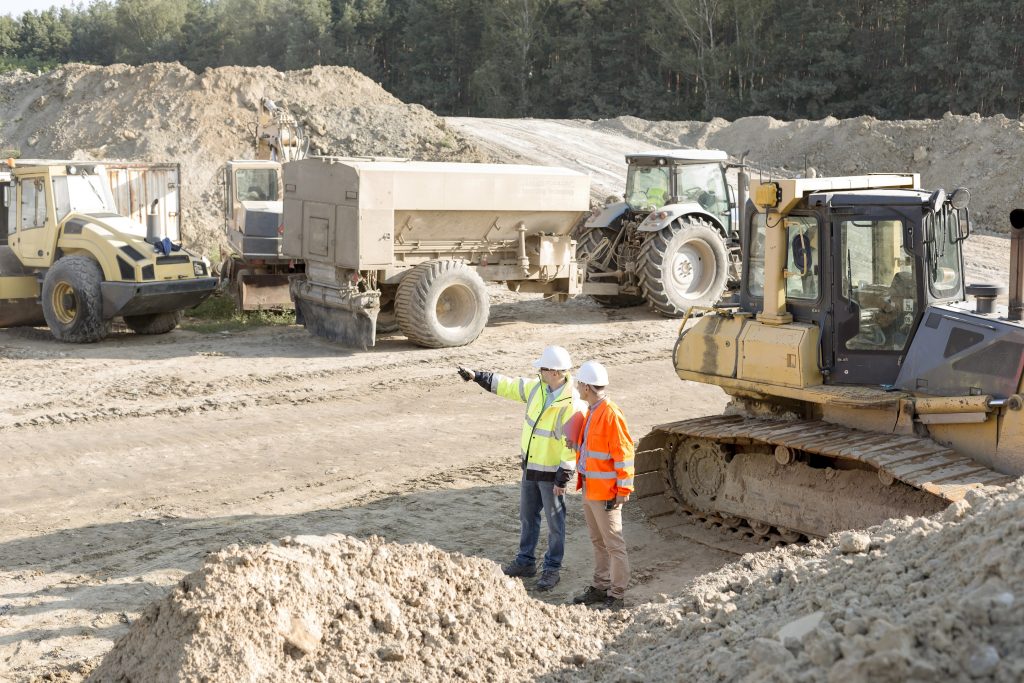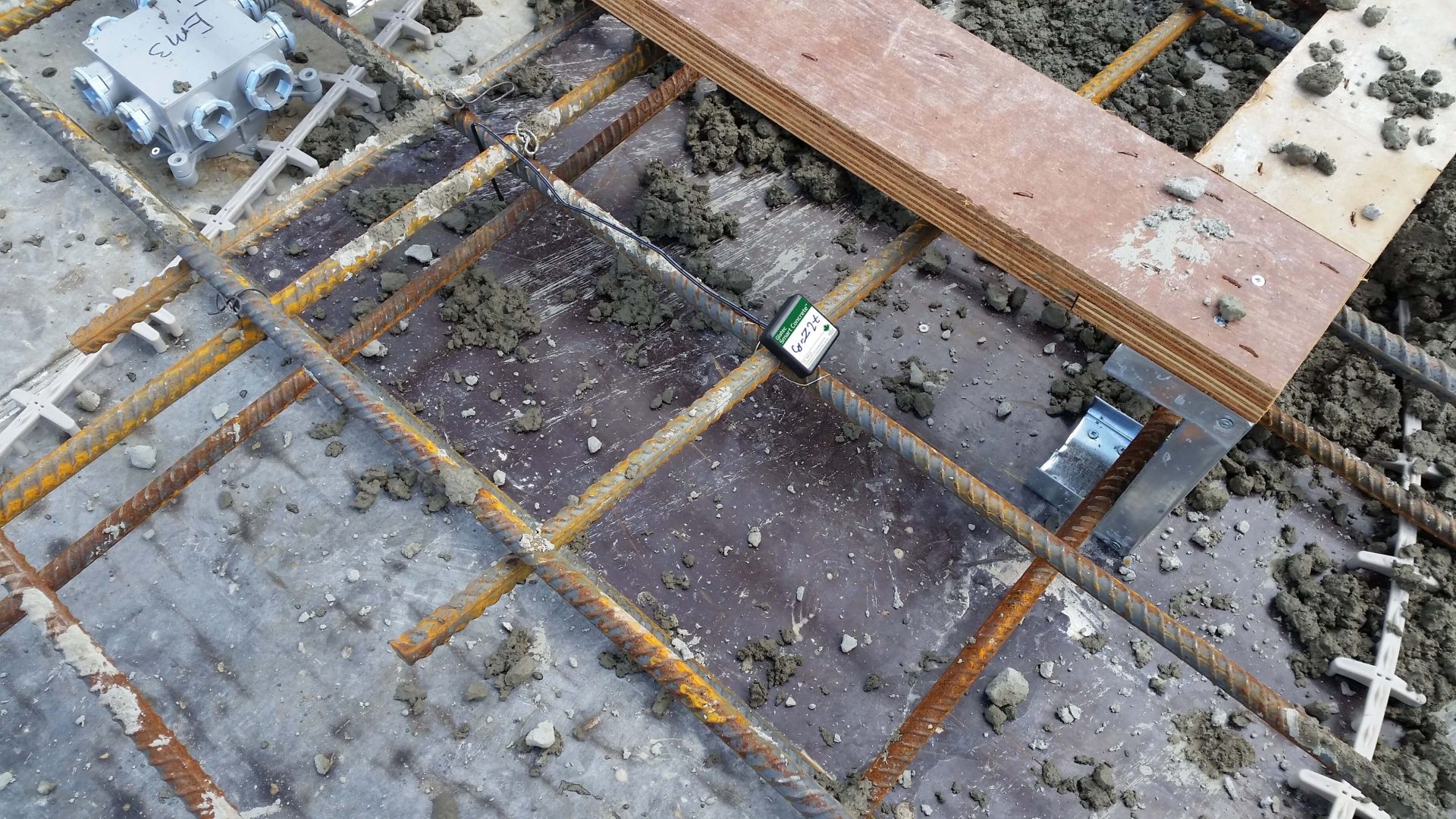
Sustainable Concrete: Positively Impacting the Environment
How Does Concrete Impact the Environment? You have probably noticed that we are big fans of concrete here at Giatec. It is an amazing, durable, and…

Sustainable Concrete: Positively Impacting the Environment
How Does Concrete Impact the Environment? You have probably noticed that we are big fans of concrete here at Giatec. It is an amazing, durable, and…

Green Concrete: 7 Tips to Make Your Construction Project Environmentally Friendly
One of our top priorities at Giatec is helping our customers and partners find an environmentally friendly way of building with green concrete. It is…

Concrete-Eating Robots – The Future of Recycling Old Buildings
The process of demolishing a building involves heavy machinery to crush concrete and separate valuable materials that can be reused. Current methods consume quite a significant amount of time and money in order…

Building Clean Energy: Mass Concrete Temperature Monitoring with SmartRock®
As global initiatives to go carbon-neutral continue to push the demand for sustainable and renewable energy sources, many are looking to wind farms as a green solution to energy needs. Wind power…

Dallas Bridge Margaret McDermott Eliminates Testing to Save Money
Photo by Art Davis, CC BY-SA 4.0, via Wikimedia Commons Explore 12 Futuristic Technology Trends Solving Concrete’s Biggest Challenges. Download our 2025 Innovations Calendar! Download…

Wood vs. Concrete: The Best Choice for Builders and GCs
Wood and concrete have been used in construction for thousands of years and for good reason. Both materials have properties that make them appealing building…

How Concrete Can Reap Solid Environmental and Economic Benefits
Made up of water, aggregate (rock, sand, or gravel), and Portland cement, concrete is the most widely used construction material. Its popularity is mainly due…

Defending the Most Sustainable Construction Material: Response to CNN
A few days ago, CNN published an article entitled “Concrete is a disaster for our planet: can the building industry break its addiction?” causing an…

How Recycled Tires Can Put an End to Potholes Forever!
Concrete and asphalt are the main materials that are used to pave the roads that paint our landscapes throughout the globe and connect us to…

Using Beet Juice to Keep Streets Healthy and Clear of Ice
A Viable Alternative to Corrosion Causing Road SaltIn Canada and other parts of the world with colder climates, road salt has been used for decades…
Re-using Plastic for Corrosion Prevention
Could a Life-Saving Plastic be a Long-Lasting Solution for Concrete Corrosion?Each year, hospitals around the world throw away tonnes of plastic waste as a result…
Reducing The Concrete Industry’s Carbon Footprint
The Advancement of Direct Air Capture TechnologyIf drastic changes regarding CO2 emissions aren’t made soon, the world will be in dire need of large-scale projects…

Improving Quality and Safety in Infrastructure Developments
Why Project Managers Should be Concerned with Concrete Quality and Safety When it comes to defects and failures in constructed facilities, project managers and construction…
A New Biological Solution for Repairing Concrete Structures
Using Mushrooms to Repair Crumbling Infrastructure There is no denying that as concrete ages it can start to crumble. Cracks and concrete corrosion can lead…

How Concrete Can Help Reduce Air Pollution
Two of the main contributors to air pollution can be reduced thanks to technological advancements in the concrete industry. Learn more now.
Benefits to Using Recycled Tires in Concrete
How Recycled Tires Are Used to Reinforce ConcreteAlthough there have been cases of concrete structures lasting centuries (like the Colosseum), concrete produced today will realistically…
Road Salt Meets its Match With a New Type of Concrete
More Durable Concrete That Doesn’t React to SaltIt has been a known fact for engineers that road salt, used as a de-icing agent every winter…
What to do with Captured Carbon?With concrete being the second most consumed substance on earth (next to water), it is no secret that the concrete…

Sustainable Concrete: Positively Impacting the Environment
How Does Concrete Impact the Environment? You have probably noticed that we are big fans of concrete here at Giatec. It is an amazing, durable, and…

Green Concrete: 7 Tips to Make Your Construction Project Environmentally Friendly
One of our top priorities at Giatec is helping our customers and partners find an environmentally friendly way of building with green concrete. It is…

Concrete-Eating Robots – The Future of Recycling Old Buildings
The process of demolishing a building involves heavy machinery to crush concrete and separate valuable materials that can be reused. Current methods consume quite a significant amount of time and money in order…

Building Clean Energy: Mass Concrete Temperature Monitoring with SmartRock®
As global initiatives to go carbon-neutral continue to push the demand for sustainable and renewable energy sources, many are looking to wind farms as a green solution to energy needs. Wind power…

Dallas Bridge Margaret McDermott Eliminates Testing to Save Money
Photo by Art Davis, CC BY-SA 4.0, via Wikimedia Commons Explore 12 Futuristic Technology Trends Solving Concrete’s Biggest Challenges. Download our 2025 Innovations Calendar! Download…

Wood vs. Concrete: The Best Choice for Builders and GCs
Wood and concrete have been used in construction for thousands of years and for good reason. Both materials have properties that make them appealing building…

How Concrete Can Reap Solid Environmental and Economic Benefits
Made up of water, aggregate (rock, sand, or gravel), and Portland cement, concrete is the most widely used construction material. Its popularity is mainly due…

Defending the Most Sustainable Construction Material: Response to CNN
A few days ago, CNN published an article entitled “Concrete is a disaster for our planet: can the building industry break its addiction?” causing an…

How Recycled Tires Can Put an End to Potholes Forever!
Concrete and asphalt are the main materials that are used to pave the roads that paint our landscapes throughout the globe and connect us to…

Using Beet Juice to Keep Streets Healthy and Clear of Ice
A Viable Alternative to Corrosion Causing Road SaltIn Canada and other parts of the world with colder climates, road salt has been used for decades…
Re-using Plastic for Corrosion Prevention
Could a Life-Saving Plastic be a Long-Lasting Solution for Concrete Corrosion?Each year, hospitals around the world throw away tonnes of plastic waste as a result…
Reducing The Concrete Industry’s Carbon Footprint
The Advancement of Direct Air Capture TechnologyIf drastic changes regarding CO2 emissions aren’t made soon, the world will be in dire need of large-scale projects…

Improving Quality and Safety in Infrastructure Developments
Why Project Managers Should be Concerned with Concrete Quality and Safety When it comes to defects and failures in constructed facilities, project managers and construction…
A New Biological Solution for Repairing Concrete Structures
Using Mushrooms to Repair Crumbling Infrastructure There is no denying that as concrete ages it can start to crumble. Cracks and concrete corrosion can lead…

How Concrete Can Help Reduce Air Pollution
Two of the main contributors to air pollution can be reduced thanks to technological advancements in the concrete industry. Learn more now.
Benefits to Using Recycled Tires in Concrete
How Recycled Tires Are Used to Reinforce ConcreteAlthough there have been cases of concrete structures lasting centuries (like the Colosseum), concrete produced today will realistically…
Road Salt Meets its Match With a New Type of Concrete
More Durable Concrete That Doesn’t React to SaltIt has been a known fact for engineers that road salt, used as a de-icing agent every winter…
What to do with Captured Carbon?With concrete being the second most consumed substance on earth (next to water), it is no secret that the concrete…
The concrete game has changed. Find out what self-calibrating sensors can do for you with Giatec’s SmartRock® Pro.